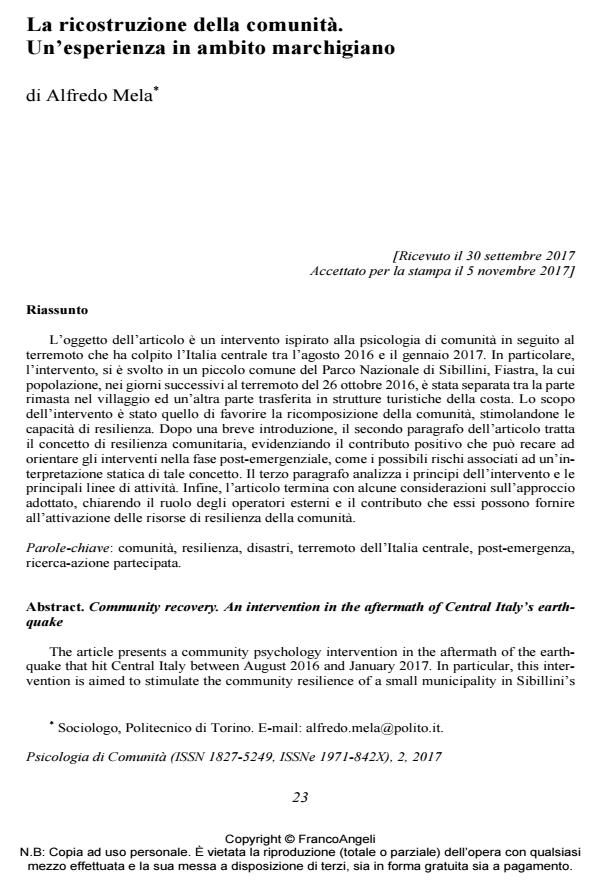Community recovery. An intervention in the aftermath of Central Italy’s earth-quake
Journal title PSICOLOGIA DI COMUNITA’
Author/s Alfredo Mela
Publishing Year 2017 Issue 2017/2
Language Italian Pages 11 P. 23-33 File size 146 KB
DOI 10.3280/PSC2017-002003
DOI is like a bar code for intellectual property: to have more infomation
click here
Below, you can see the article first page
If you want to buy this article in PDF format, you can do it, following the instructions to buy download credits

FrancoAngeli is member of Publishers International Linking Association, Inc (PILA), a not-for-profit association which run the CrossRef service enabling links to and from online scholarly content.
The article presents a community psychology intervention in the aftermath of the earth-quake that hit Central Italy between August 2016 and January 2017. In particular, this inter-vention is aimed to stimulate the community resilience of a small municipality in Sibillini’s National Park, Fiastra, whose population was divided into two parts: one remained in the village; the other was moved to the coasts after the earthquake of October 26, 2016. After a short introduction, the second paragraph of the article discusses the concept of community resilience highlighting the positive contribution that it can make to the interventions for community recovery as well as the possible risks associated with a static interpretation. The third paragraph analyzes the principles of the intervention and the main lines of activity. Fi-nally, the article ends with some considerations on the approach used, clarifying the role of external operators and the contribution they can provide to the activation of community re-silience resources.
Keywords: Community, resilience, disasters, Central Italy’s earthquake, post-emergency, participatory action research.
Alfredo Mela, La ricostruzione della comunità. Un’esperienza in ambito marchigiano in "PSICOLOGIA DI COMUNITA’" 2/2017, pp 23-33, DOI: 10.3280/PSC2017-002003